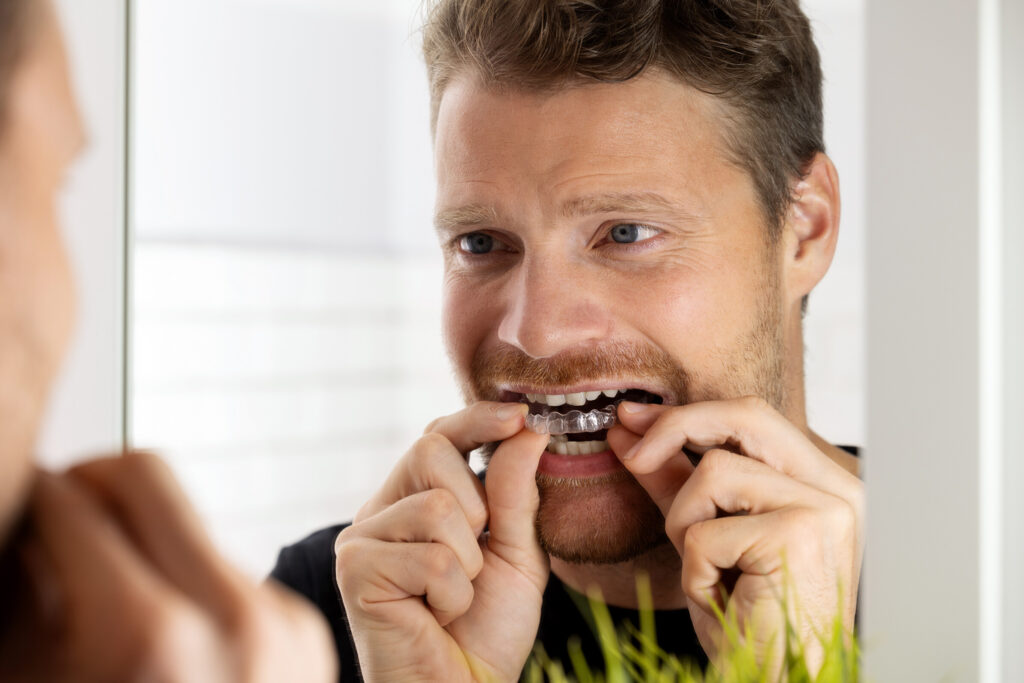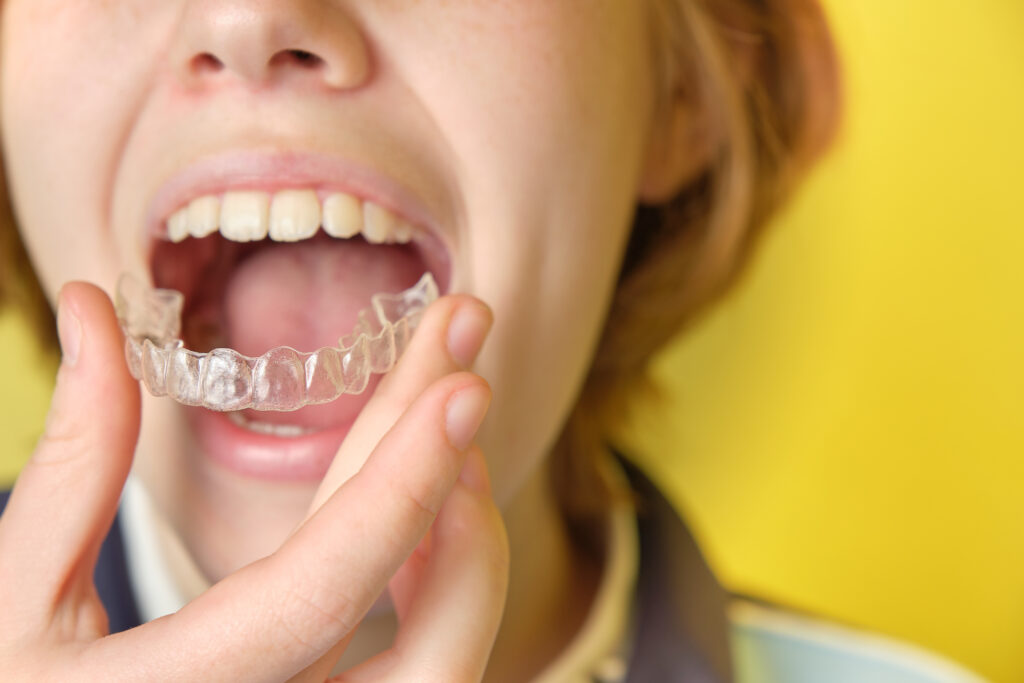Clear Aligners
Do you dream of having the perfect smile? Having crooked or crowded teeth can make people self-conscious about their smiles and can also hinder their dental hygiene, which can lead to tooth decay, gum disease, or other issues with oral health. Perhaps you’ve avoided orthodontic treatment because, as an adult, you don’t want to wear traditional metal braces. Fortunately, there may be a more discreet way to straighten your teeth: clear aligners.
Clear aligners are nearly invisible plastic shells that snap over your teeth. As you wear them, they apply gentle pressure to your teeth, gradually repositioning them.


How Do Clear Aligners Work?
Clear aligners are sets of clear, thin, plastic-like trays that are custom-formed to fit your mouth and sequentially apply the pressure required to move the teeth. Typically, each aligner is worn for 1 week at a time, at least 22 hours a day, and moves teeth a fraction of a millimeter at a time.
Aligners must be removed when you eat or drink and when brushing and flossing. The number of aligners and treatment times needed to correct misaligned teeth varies based on the individual’s orthodontic issues and the movements needed to correct them. To find out if aligners are the best solution for you, schedule a consultation with your orthodontist.
What Do Invisible Aligners Treat?
The most common conditions treated by aligners include:
- Gapped teeth
- Cramped or crowded teeth
- Overbite
- Underbite
- Open bite
- Crooked teeth
- Crossbite
Clear aligners may be a treatment option if you want straighter teeth and a less visible option to traditional braces.


Who Isn’t Eligible for Aligners?
Clear aligners are not right for everyone. Your orthodontist will recommend the best treatment option based on your unique needs, which may include aligners, braces, or a combination of approaches. Aligners can also be paired with traditional orthodontic elastics, while some cases are treated more predictably with braces.
An orthodontist is best qualified to determine whether braces or clear aligners are the best treatment option for you.
Does Dental Insurance Cover Aligner Treatment?
Dental plans with orthodontic coverage usually cover both traditional braces and clear aligners equally! However, each plan is different, and accepted coverage varies from provider to provider. The best way to get an accurate cost assessment is to consult a qualified orthodontist who can evaluate your specific needs and provide a personalized estimate.
To better understand your insurance and payment options for orthodontic treatment, contact your nearest AAO orthodontist.
